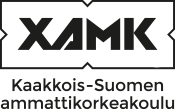Colour and surface (5 cr)
Code: MU00DT19-3002
General information
Enrollment
16.12.2019 - 10.01.2020
Timing
13.01.2020 - 26.04.2020
Number of ECTS credits allocated
5 op
Virtual portion
1 op
Mode of delivery
80 % Contact teaching, 20 % Distance learning
Campus
Kouvola Campus
Teaching languages
- Finnish
Seats
15 - 22
Degree programmes
- Degree Programme in Bioproduct Design
- Degree Programme in Fashion and Costume Design
- Degree Programme in Interior Architecture and Furniture Design
Teachers
- Seija Kiuru-Lavaste
- Nina Palmros
Teacher in charge
Nina Palmros
Groups
-
MPKV20KPMuoti ja puvustus, päivätoteutus
Objective
You are familiar with the colour theories and can adapt them to the design tasks.
Having completed the course, you can utilise perceptions produced by colour and the transforming ability of colour.
You become familiar with subtractive, additive and optical colour mixing.
You understand the birth mechanism of colours.
You understand the significance of the history of colours and their culture-specific nature.
You understand the significance of colour in design and communication.
Content
What kind of phenomena exist related to colour?
What kind of properties are connected to a colour?
How do we talk about colours using the right terms?
How is colour used in planning and design of products?
Exercises relevant to the professional field, associated with Workshop execises.
Location and time
Credit transfer or partial credit transfer.
Materials
Harald Arnkil. 2008. Värit havaintojen maailmassa. Jyväskylä: Gummerus Kirjapaino Oy.
Teaching methods
Scheduled track:
Teaching which is in accordance with the working order and control ( 5 cr).
Independent track:
Demonstration/recognition of prior learning.
Blended track:
Credit transfer or partial credit transfer.
Completion alternatives
Demonstration/recognition of prior learning.
Student workload
5 cr contact
Evaluation scale
1-5
Assessment methods and criteria
Is able to
a. use professional vocabulary systematically.
b. look for information in the key information sources of the field.
c. identify interrelated tasks.
d. work together with customers, users and target groups.
e. use the key models, methods, software and techniques of the professional field
f. work as team members in a goal-oriented way
g. justify their actions according to the ethical principles of the professional
field
